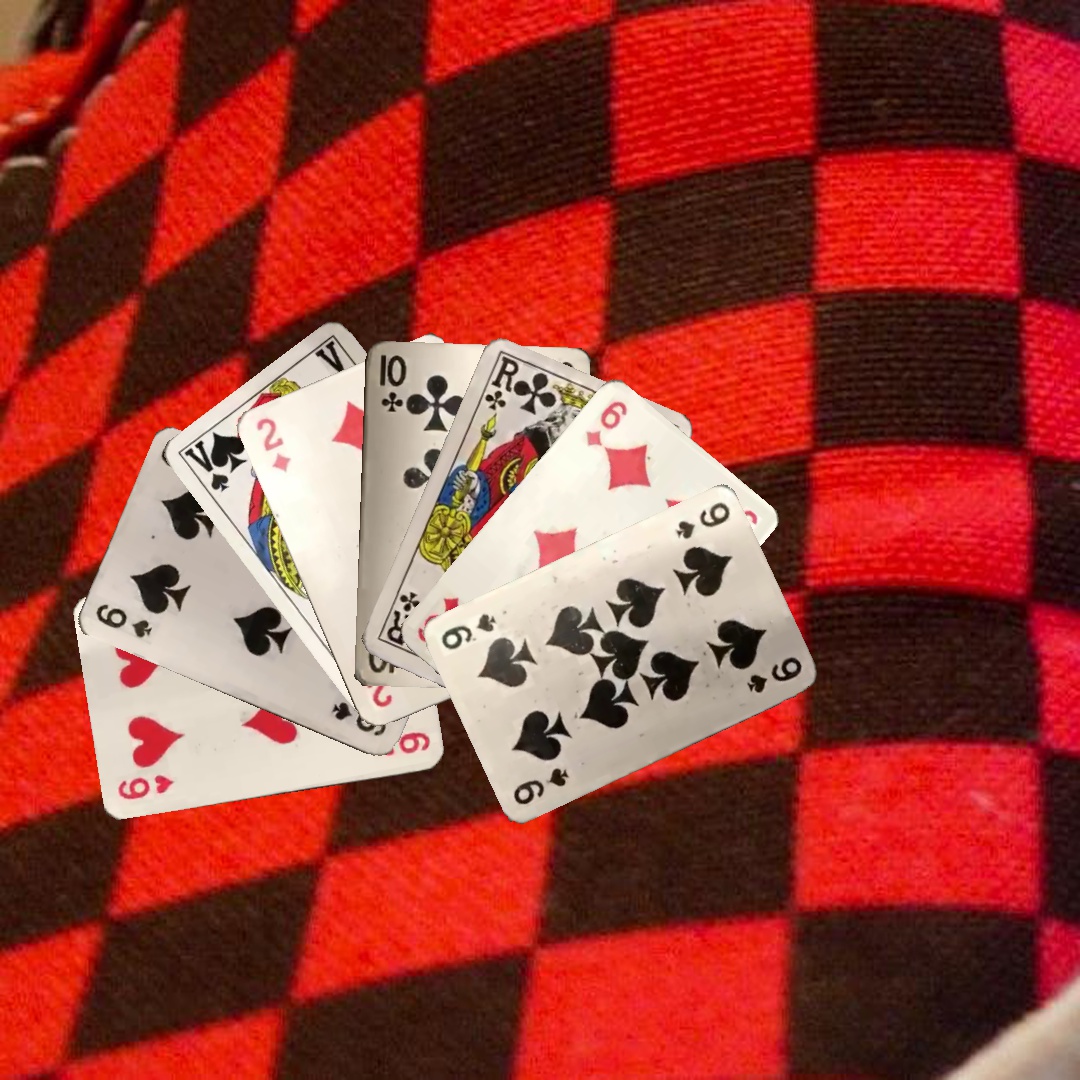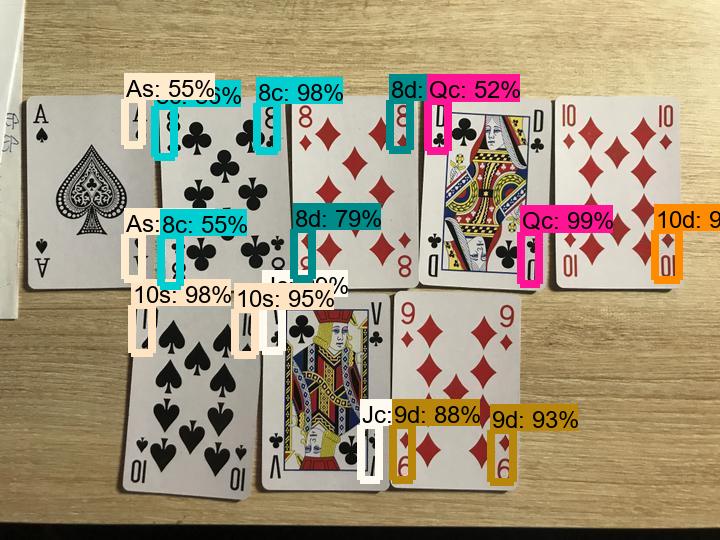Computer Vision generative Dataset and Machine learning on playing cards
This project is using
- python 3.6.7 and several libraries
- opencv
- CV libraries
- imgaug
For full project go to DatasetCreator.ipynb
- Load video from phone or camera
- use cv2 lib to capture video and find countours of card
- cv2 to check both corners to match the entire sign
- idea is to label all sign of the card
- using opencv findCountours functions and aprox
- Load background random dataset
- Load all card from pickle file and store them in a var
- use imgaug and shapely to transform image using img transformation for card and BoundingBoxes
CNNs are regularized versions of multilayer perceptrons. Multilayer perceptrons usually mean fully connected networks, that is, each neuron in one layer is connected to all neurons in the next layer. The "fully-connectedness" of these networks makes them prone to overfitting data.
CNNs take advantage of the hierarchical pattern in data and assemble more complex patterns using smaller and simpler patterns. Therefore, on the scale of connectedness and complexity, CNNs are on the lower extreme.
The hidden layers are mostly convolutional layers :
- Input is a tensor with shape (number of images) x (image width) x (image height) x (image depth).
- Convolutional kernels whose width and height are hyper-parameters, and whose depth must be equal to that of the image => using image convulution to reduce dimension
- Convolutional networks may include local or global pooling layers to streamline the underlying computation. Pooling layers reduce the dimensions of the data by combining the outputs of neuron clusters at one layer into a single neuron in the next layer
- Activation layers : ReLu layers that removes negative values from an activation map by setting them to zero and maight be some Pooling layers
In the R-CNN algorithm, we feed the input image to the CNN to generate a convolutional feature map
Setup environnement, CuDa and so on on a jupyter collab file and run model Then, we run the train and export frozen model.pb with tf
Analysis can be found : https://github.com/hugofloter/Cards-machine-learning/blob/master/analyse_tensorflow.ipynb
F1 score obtained : 0.8125
here are the result at step 50k








